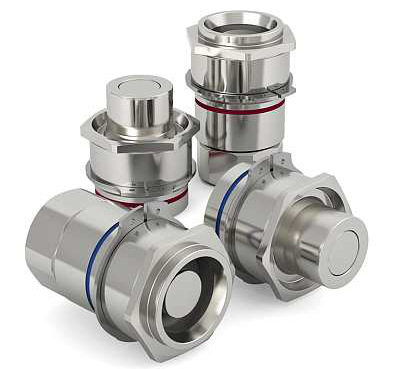Un productor de servidores de datos usa acoplamientos modulares sin fugas para la refrigeración

La gestión térmica necesita acoplamientos rápidos seguros, fáciles y fiables con alto caudal para un proceso de refrigeración eficaz. La recién desarrollada Serie 767 Non-Drip de latón de alto caudal es un acoplamiento modular sin fugas asequible adaptable a prácticamente todas las aplicaciones, ideal para la refrigeración en electrónica.
Los centros de datos generan una cantidad considerable de calor que debe ser rebajada. Tradicionalmente se ha utilizado aire para la refrigeración, sin embargo, en los últimos años la refrigeración líquida se ha hecho más popular, ya que esta solución reduce el calor de manera más eficaz y más económica que el aire.
Bajas caídas de presión en líneas de fluidos
Un gran fabricante de servidores de datos fue en busca de una solución de desconexión rápida para su nuevo sistema de refrigeración por agua. Los acoplamientos debían ser instalados en las líneas de suministro y retorno de la bomba de refrigeración para controlar y canalizar el calor generado por el servidor. CEJN propuso su serie 767 estándar de Non-Drip, sin embargo, con el fin de cumplir con la estricta exigencia de una baja caída de presión para la aplicación del cliente, CEJN tenía que mejorar la capacidad de caudal del conector.
 High-Flow coupling equals the solution
High-Flow coupling equals the solution
During the development phase CEJN engineers worked closely with the customer to gain knowledge of the liquid cooling application. The standard Non-Drip 767 fluid coupling was refined and a new High-Flow brass version with EPDM seals presented. The new version has an impressive flow capacity for DN19 with flow coefficient, Kv 13,3. This was a huge improvement compared to the standard version with Kv 10,8.
Satisfied customer
After a couple of years of installation the customer is pleased with the solution and of the couplings extreme durability that has led to a long life and trouble free product. Flow capacity has always been a key design factor for CEJN product development no matter if its compressed air flow, hydraulic fluid flow or as in this case low pressure liquid cooling lines.